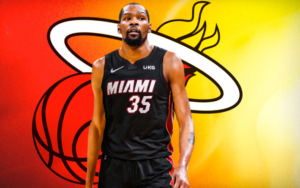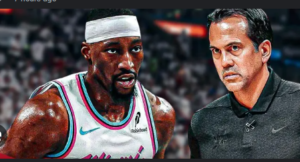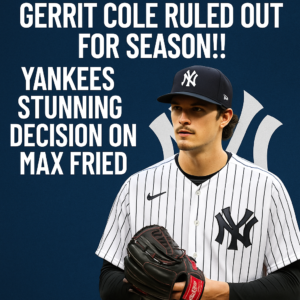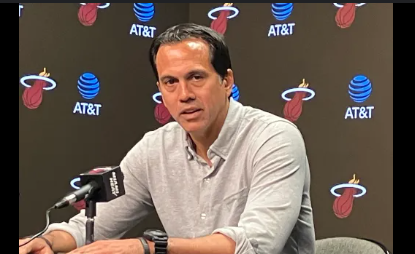
The Miami Heat did not have a good offseason and appear to be back on track for the second consecutive season.
Miami made several modest changes this offseason that left supporters wanting more. Some of Miami’s movements were okay, while others made little sense to me. Here are three things they should wish to take back.
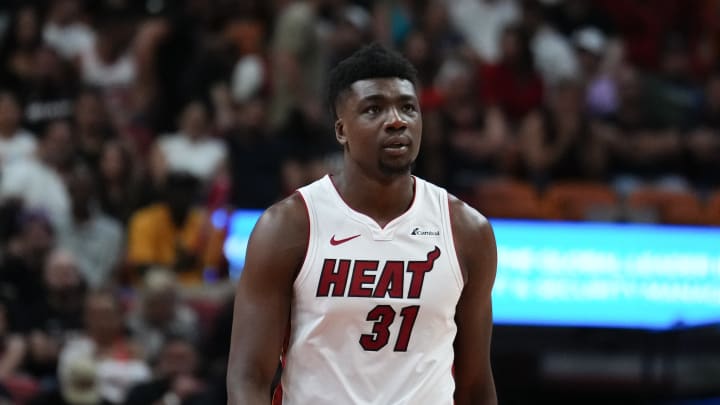
This summer, the Miami Heat were doomed because they acted too quickly and lacked innovation.
1. Resigning. Thomas Bryant
Thomas Bryant is a solid backup center who played in spurts during his first season in Miami, largely due to injuries. Over 38 games, he averaged only 11.6 minutes per game, the fewest he’d played since his rookie season. When the Heat signed him last summer, he was renowned as a three-point shooter. He made only four all season.
Bryant signed back with Miami on July 3, only a few days after the start of free agency. I have no problem with Bryant as Miami’s backup center. My issue is with bringing him back so early in free agency.
Instead of bringing back Bryant, the Heat should have signed Keshad Johnson to a normal contract (rather than a two-way contract). If they had waited until summer league, they might have concluded they should proceed in that path.
If not Johnson, the Heat might have used the cap space to make an offer to Tyus Jones or even bring back Caleb Martin. Signing Bryant so early in free agency may have pushed the Heat out of contention for better deals later in the summer.
2. Kevin Love contract.
I admit that I have some minor concerns about Kevin Love’s deal. Love has been an excellent addition to the Miami Heat’s roster, both on and off the court.
To return to the Heat, Love signed a two-year contract worth $7.8 million. The salary isn’t awful for a backup big, but Miami didn’t have a lot of money to spend, so why pay nearly $8 million for a man who couldn’t play in the previous playoffs? To me, it seems like too much.
Nonetheless, Love will be an excellent mentor for first-round pick Kel’el Ware and has demonstrated chemistry with Jimmy Butler in reserve units.
Having Love as a mentor is ideal for any young big. I simply wish the deal was cheaper, as the Heat won’t have much cap room remaining below the second tax apron after this summer.
3. Lack of Creativity
Without a doubt, the Heat have a well-respected front staff that has done an excellent job identifying and developing talent. However, it is fair to say that they have not been particularly imaginative in retooling the top of the squad around Jimmy Butler and Bam Adebayo.
The Heat have limited draft assets and finances, and failing to find imaginative methods to boost both will be a missed opportunity.
The Heat may say they enjoy their team, and while the injury bug wasn’t kind to them last season, everyone else in the East improved while Miami did little to strengthen the roster. Instead, the Heat are counting on younger players to contribute so that the club can progress.
Miami reportedly attempted to acquire Mikal Bridges and DeMar DeRozan this summer but were unable to reach an agreement. The concepts were good, but the execution was lacking, and the Heat have yet to accomplish anything meaningful this summer.
Three unexpected lessons the Heat may learn from their summer league title run.
The Las Vegas Summer League championship run has little association with NBA basketball games, so it’s risky to overestimate its significance. Let’s make too much out of the Las Vegas Summer League championship season!
Aside from the jokes, the Heat are unique in that they frequently establish a link between their NBA club and developmental teams. The NBA franchise frequently runs comparable programs to the Sioux Falls Skyforce and the Las Vegas Summer League team. Or at least comparable in concept.
Also peculiar to this summer league team: at least five players who competed in Las Vegas are expected to be on the Heat’s roster next season. Kel’el Ware, a first-round pick; Pelle Larsson, a second-round pick; Keshad Johnson and Josh Christopher, both on two-way contracts; and Jaime Jaquez Jr., a first-round choice from last year who appeared in two summer league games.
So, while summer league success does not foretell regular-season success, the organization can learn a few things from its experience.
1. Use Kel’el Ware as a rim protector.
Weeks after being drafted with the 15th pick, Ware made his summer league debut in a blowout defeat to the Warriors in San Francisco, recording five blocks.
The block totals were spectacular, but the Heat were outscored by 12 points over Ware’s 24 minutes. He jumped too much and was frequently out of position to protect the rim. If he didn’t get a block, he was frequently scored on.
Coaches restrained him. They urged him not to worry about posting large block numbers; the swats would come. Consider protecting the rim. That meant taking a stance, corralling opposing ball handlers approaching the paint, and making it difficult for them to get away with a simple pump fake.
Ware finished the summer league with an average of 1.8 blocks per game. That’s a lot for the Heat, who had no player average one block previous season, but it’s not Hassan Whiteside-style box-score stuffing.
As the summer league progressed, Ware improved his ability to guard the paint. By the championship game, opponents were moving away from him. He anchored Miami’s title defense despite only one block in the game.
Ware, 20, still needs to improve his ability to complete his homework on defensive possessions early in order to avoid falling behind the play. He’ll have to get more physical. He is far from flawless. But he’s also 7 feet tall and has a wingspan of 7 feet-4. The Heat would be wise to capitalize on it early after finishing 23rd in opponent shooting percentage at the rim previous season, according to Cleaning the Glass.
2. Scoring is vital.
It’s no coincidence that the Heat won the summer league championship after outscoring all other teams in Las Vegas.
Summer league is easier to score than regular NBA games (especially when the club makes 52% of its shots), but the LVSL Heat also used a more current offensive system.
The Heat in Las Vegas attempted more 3-pointers (40% of their shots) than the Heat previous season and played at a faster pace, relying on hit-ahead passes and trailing 3-point shooters for efficient looks.
If this is any indication of how the Heat intend to play next season, it’s a good thing. For the past two seasons, the Heat have ranked in the bottom ten in terms of offensive rating, as well as near the bottom in League Pass standings. Not that they care, but playing a more enjoyable style of basketball isn’t only about the vibes. Consider the Indiana Pacers, whose offense sparked a run to the 2024 Eastern Conference Finals.
The Heat can preach about elbow pads, the nastiest, hardest-working blah blah blah all they want, but scoring points remains the most important aspect of this sport.
3. The pick-and-roll can form the basis of the offense.
To accomplish this, the Heat may seek to emphasize the pick-and-roll as a key component of their attack.
Miami consistently ranks toward the bottom of the league in terms of pick-and-roll completion rates. That isn’t a problem in and of itself, but it is indicative of the Heat’s struggle to consistently generate efficient offense.
Last season, the Heat relied too heavily on midrange shots. Swapping some long 2s for 3s is usually beneficial, but getting the easier ones in the basket is even better.
For years, the Heat have lacked an excellent rim runner. Bam Adebayo is more effective while facilitating on the perimeter, and larger centers such as Dewayne Dedmon, Cody Zeller, and Thomas Bryant have not worked out. Ware is a bet on talent and potential. He’s a great athlete, unlike Miami’s other backup centers. Using him as a rim runner and lob threat could help the Heat’s offense become more efficient.
The question is, who will be Ware’s pick-and-roll partner? In Las Vegas, it was primarily undrafted point guard Isaiah Stevens. Even if Stevens signs a two-way contract, he will not play nightly rotation minutes. Ware must therefore create chemistry with another player.
The obvious choice is Terry Rozier, who is already the Heat’s top pick-and-roll ball handler and lob thrower. Tethering Ware’s minutes to Rozier’s might provide the groundwork for Miami’s second-unit offense.
